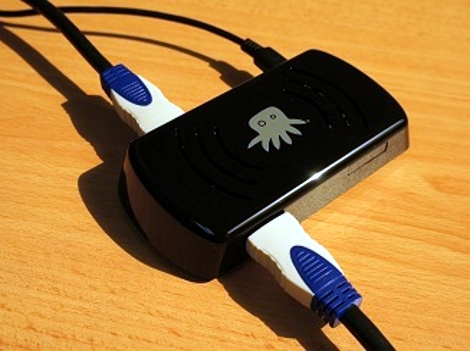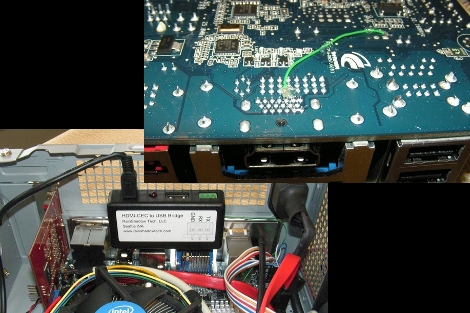
Check out the new set-top box on the block, the NeTV from Chumby Industries. That link will take you to their video demonstration of the device, which is a humble-looking black box with no apparent user interface. You’ll see a few cool tricks that may impress you, like pairing the device with an Android phone through the use of a QR code. Once the two have mated you can do things like share images on the TV and load webpages from addresses entered into the smart phone. There are options for scrolling alerts when you receive an IM or SMS, and a few other bells and whistles. All of this from a device which connects with two HDMI ports to sit between your TV and whatever feeds it a video signal. Read all about the features here.
But its the hacking potential that really gets our juices flowing. The developer page gives us a look inside at the Spartan-6 FPGA that lives in the little case. We don’t often quote [Dave Jones] but we’re certain he’d call this thing ‘sex on a stick’. They’ve made the schematic and FPGA information available and are just begging for you to do your worst. The power for the device is provided by a USB connection but curiously is just above spec when drawing a max of 700 mA. We have a USB port on the back of our TV and would love to velcro this thing in place and power it from that. What would you plan to do with it?
[via Reddit]














